“There are two reasons we are doing this, first it is because we like to be here and secondly it is to keep within Sancerre, after all what is Sancerre if there are no winemakers here?” says Jean-Laurent Vacheron.
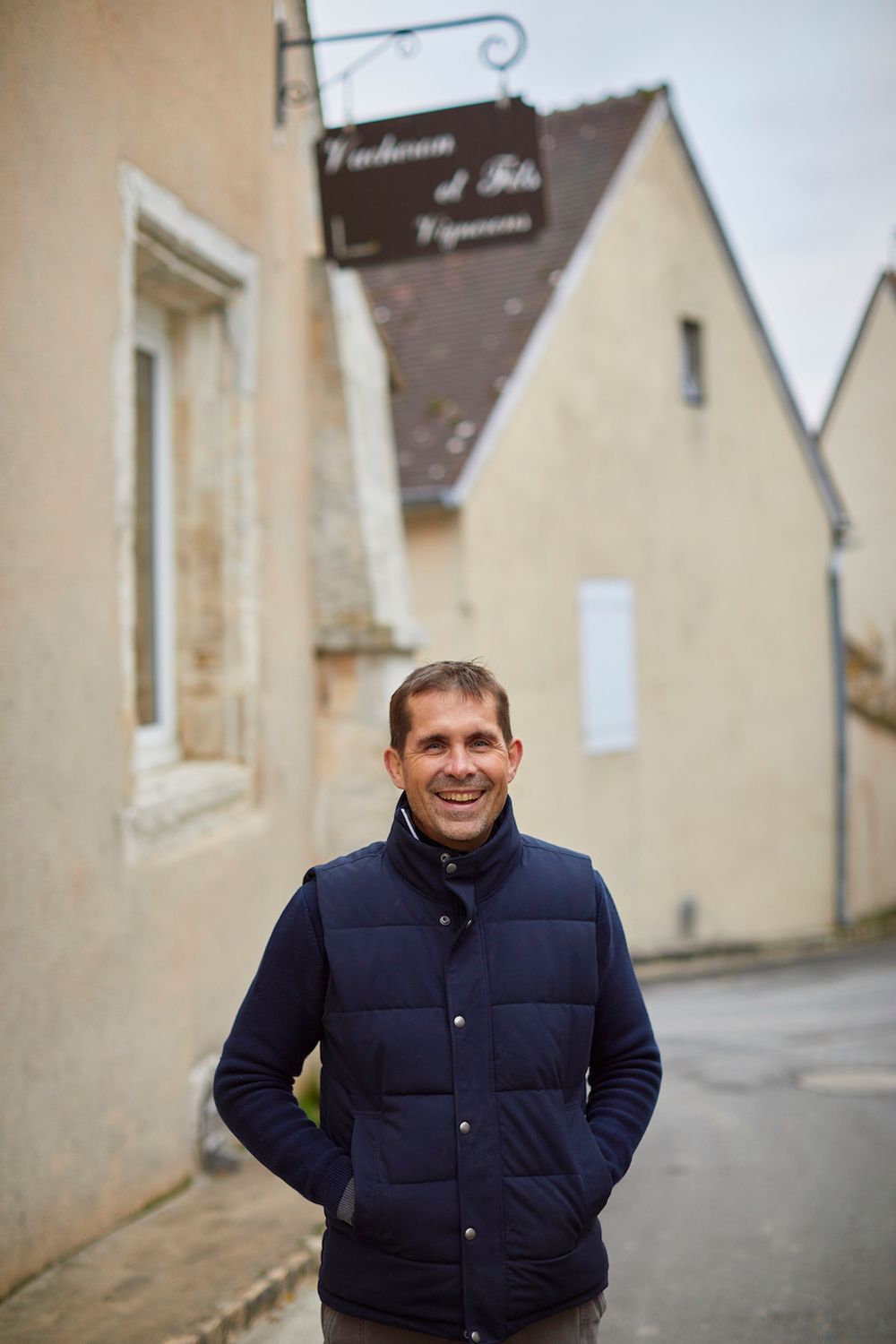
Jean-Laurent Vacheron, November 2021
“And 200 kilometres in that direction is Nuits-Saint-Georges,” Jean-Laurent Vacheron says pointing far into the distance South-East from Belle Dame, one of the eight lieu-dits that the Vacheron family owns in Sancerre and makes a single vineyard cuvée from.
Jean-Laurent, together with his cousin Jean-Dominique, are the newest generation of Sancerre’s leading winemaking clan, artisans who have shown the world the heights and complexity that Sancerre can reach. Their wines are often referred to as ‘Burgundian’, partly because of the exacting work that goes into their terroir-driven single vineyard wines, partly as a compliment – along with Cotat there are few vignerons here that are as well respected as Vacheron.
So was this not the perfect opportunity for all winemakers in Sancerre to be trumpeting their style of Pinot Noir? I ask – given the recent stratospheric price rises in Burgundy and how the effects of climate change has started to affect their wines?
“Ha!,” Vacheron laughs, “we don’t want to be Burgundy, but you should do some consulting with some of the other winemakers in Sancerre, you could make some money thinking like that.”
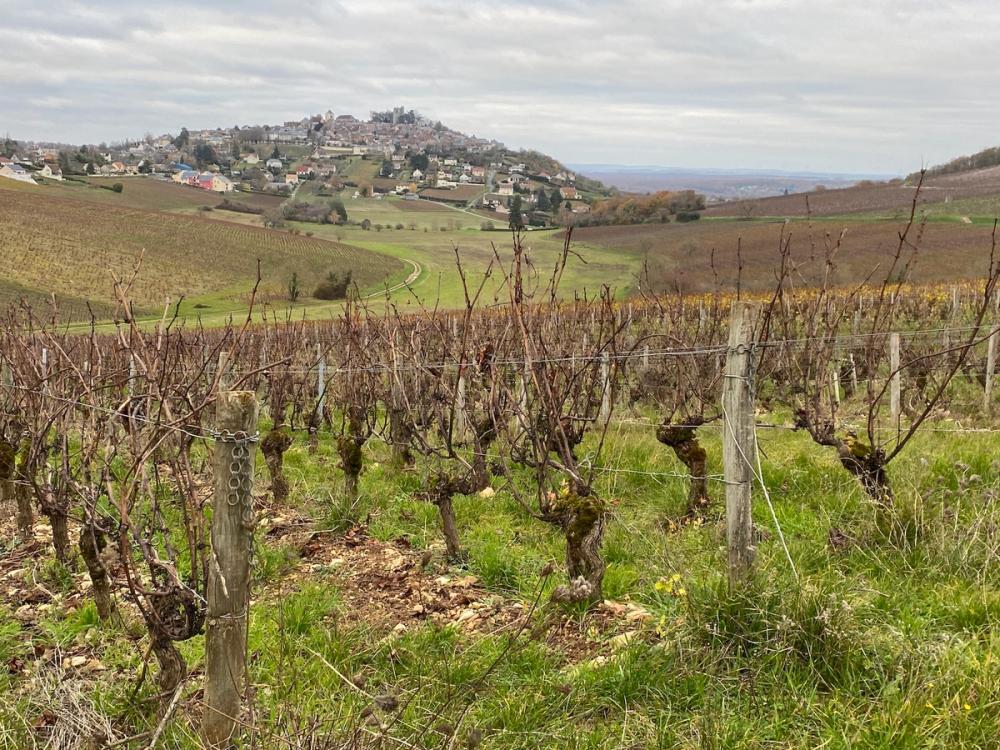
Sancerre, viewed from one of Vacheron’s many lieu-dits
Going from strength to strength
I’m here in the small medieval hilltop town of Sancerre on a bitterly cold November afternoon with a small team from Pol Roger Portfolio who have just secured a sales and distribution deal with Vacheron. Formed in 1900 and now run by the ‘two Jeans’, the estate has always been known for making wines of dazzling purity and elegance, but since this fourth generation pair took over day-to-day operations, Vacheron has stepped up a gear to become one of a handful of the very best producers of red and white Sancerre, if not the best.
The pair have built on the estate’s success to date, acquiring vines in the most highly-coveted lieu-dits of the region, removing all synthetic material from the viticulture and winemaking process, farming organically and biodynamically since 1999 (certified 2005), using only homemade compost and brews from collected rainfall, picking everything by hand and dramatically reducing yields.
They apply a Burgundian fastidiousness to their winemaking, even though it is not consciously imitating it, with parcels being vinified by specific terroir – which was not commonly done here previously – and blends varying from year to year, a section of their old barrel room even made up of barrels sourced from Domaine Romanée Conti for their red cuvée Les Marnes. Any reflected glory is quickly dismissed by Jean-Laurent Vacheron, a more modest, charming and disarmingly hospitable man you are not likely to meet.

A map of the area with Vacheron’s vineyards indicated in red, the River Loire to the right
Pinot Noir makes up roughly 20% of Vacheron’s annual production, which is in line with the region’s average, but where red Sancerre has to many winemakers here played second fiddle to Sauvignon Blanc, it is the approach to making these exquisite red wines that has got the pair international recognition. These Pinots are light to medium-bodied, beautifully-perfumed, and have the structure to last decades.
Although one could be mistaken in a blind-tasting for thinking these wines were from 200 kilometres away, they are distinctly wines from the Loire. Interestingly, when talking about winemaking style, Jean-Laurent name-checks the Rhône rather than Burgundy, confessing to an influence of Reyas and the tannin expression it achieves with the Grenache grape.
It is only fitting, then, that Jean-Laurent and Jean-Dominique have made such great strides with their Pinots. Sancerre, after all, was predominantly a red wine-producing region until phylloxera decimated it in the late Nineteenth Century with Sauvignon Blanc planted in its place. Despite its historical importance the final ‘ignominy’ was that red Sancerre only achieved AOC status in 1959 – 23 years after Sauvignon Blanc did. The work the cousins are doing is going some way to rectifying the balance.
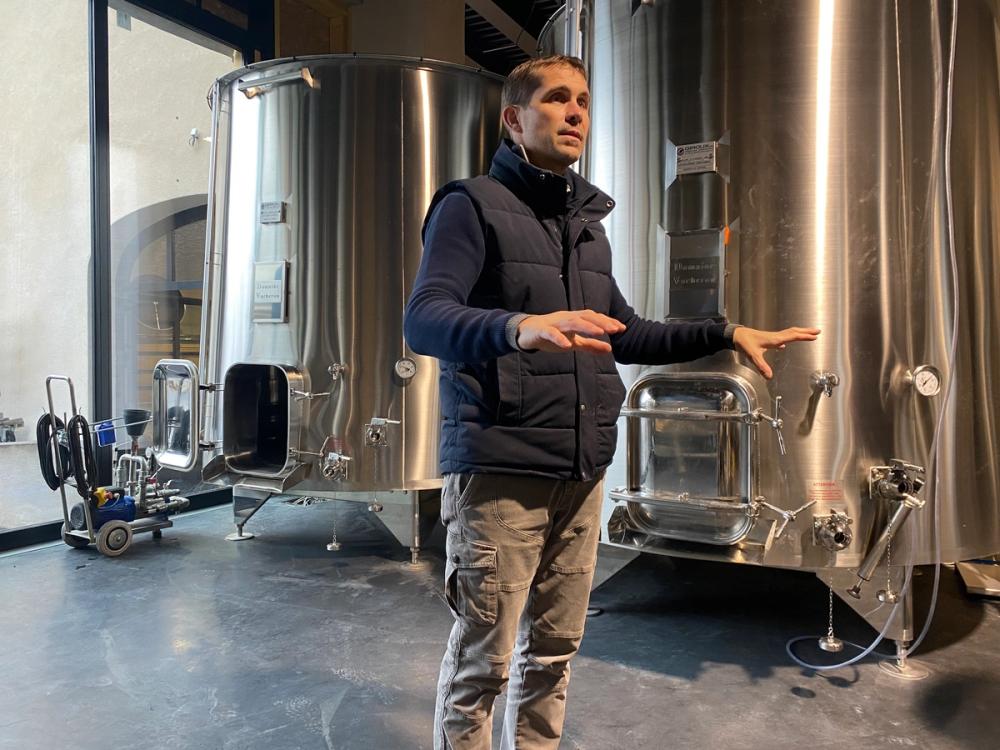
“We now have the capacity but we are not chasing that,” Jean-Laurent Vacheron in the new winery
Keeping winemaking at the heart of Sancerre
The last time I visited Vacheron in 2018 I was shown around by Jean-Dominique in what was then a quaint but small, cramped, somewhat higgledy-piggledy operation that was clearly straining at the seams. Today it has been transformed beyond all recognition – jaw-droppingly so. The main domaine that has grown out of the family home now has a Willy Wonka-like glass elevator running through three floors including a new floor housing a range of spanking new vinification vessels up to a massive attic that is being converted into a restaurant, one side completely glass, overlooking the village and patchwork of vineyards beyond.

Part of the giant window that will overelook the village and vineyards
In addition, the family has bought ten houses, demolished them and prepared an area where 40 houses once stood, covering an entire hectare for the new winery – the ambition of this multi-million pound project enhanced by the fact that this is all situated very close to the centre of a medieval town in a country not known for its expediency or leniency when it comes to planning approvals.
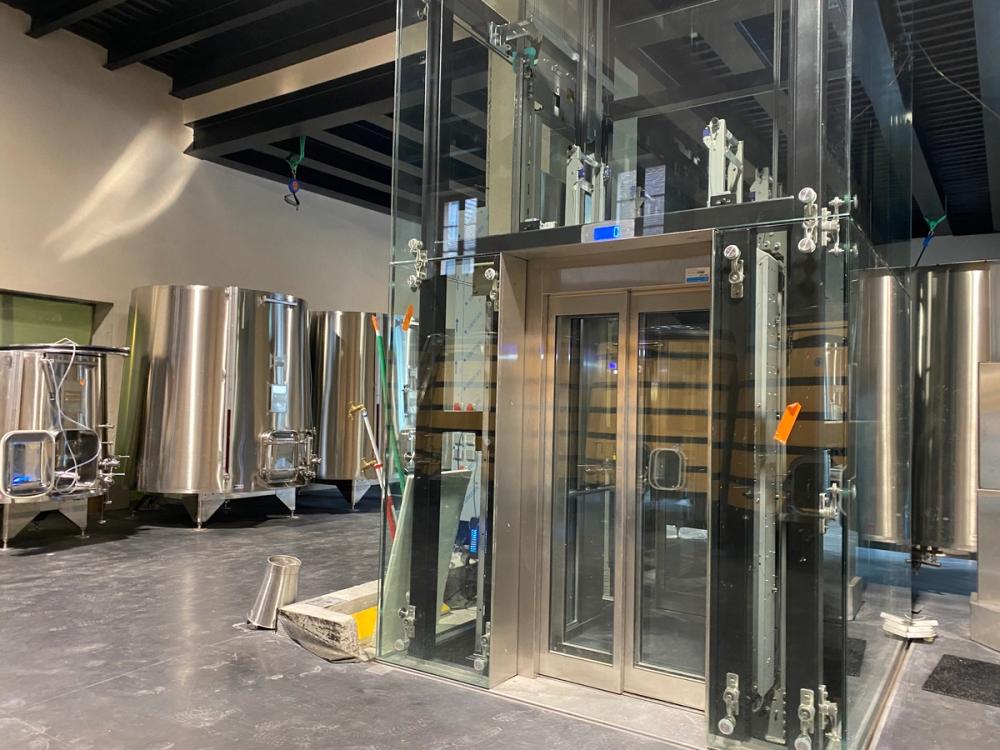
The new vinification floor and lift that will take visitors up to the rooftop restaurant
While this work is continuing on what will be the main winery, the two Jeans have had to convert their grandparents home next door into a state-of-the-art winery in order to vinify the 2020 harvest, the tanks being lowered in through the roof. The scale of the project and the level of detail, that will help facilitate their meticulous approach to winemaking, cannot be under-estimated – all electrics, water, pipework are hidden; there are also two tanks where they will produce their own nitrogen so that every wine will be produced under a micro-nitrogen level to virtually eradicate the need for sulphur.

The grandparents’ home converted to handle the 2020 harvest while construction work was undertaken on the main building
Before conservationists hold their hands up in horror about this large-scale development within an historic town, part of Vacheron’s rationale is to ensure that winemaking stays at the heart of Sancerre. The town, like much of rural France, is full of empty houses with the population having halved over the past century to a mere 1300 people. Winemakers have also been part of this exodus so, where there was once 20 winemakers within the town walls there are now just two or three, says Jean-Laurent.
The exodus of winemakers out of the town started in the 1980s when established winemakers started taking on négoces wines. It was hard to expand production within the town walls so they moved out to purpose-built wineries on plateaus towards the Loire.
“There are two reasons we are doing this, first it is because we like to be here and secondly it is to keep within Sancerre, after all what is Sancerre if there are no winemakers here?”
For Vacheron there is one additional objective – he comes from a family of restaurateurs and the converted building will be taking it (partly) back to its roots as a restaurant, a relationship with the wine which fits at the heart of their winemaking philosophy and a key reason they have teamed up with Pol Roger.
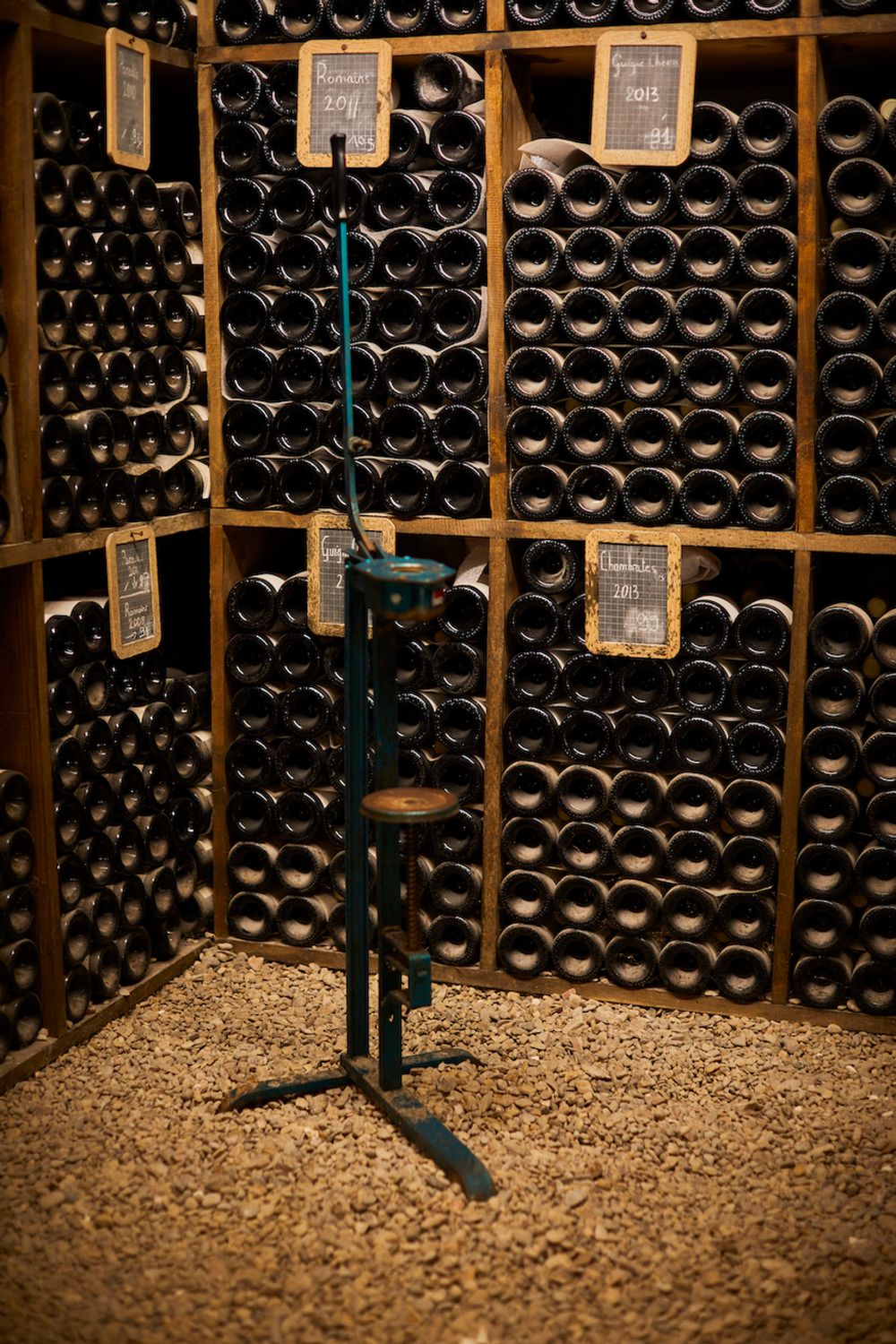
Library stock in the tasting room
Balancing capacity and yield
The new winery will help to put the town of Sancerre firmly back onto the map.
Vacheron can increase its capacity from producing 1200 hectolitres to 2000 hectolitres at any one time, and substantially increase its library of aged stock, which it periodically releases to the on-trade when vintages have reached optimum maturity, the most recent releases to restaurants being 2010, 2012 and 2013. But, sadly, the increase in capacity at the new winery has come hand in hand with the 2021 harvest and severely reduced yields.
Hand-harvesting all their fruit means that Vacheron already obtains low yields of 43hl per hectare, compared to Sancerre’s permitted 50hl. In 2021, however, they achieved just 12hl per hectare resulting in just a quarter of an average Pinot harvest and half of an average Sauvignon Blanc one.
“We did a good job,” says Jean-Laurent, “some people had none,” adding that his next job is to reduce everybody’s allocations by 60% until September 2022, when this year’s vintage will start to kick in.
The scale of this drop in yield is evidenced by the amount of empty tanks and also two demi-johns which are all that has been produced from L’Enclos, which is one of Vacheron’s prime sites within the town’s ramparts.
“I’m not sure what we will do with this,” Jean-Laurent says pointing at the sad looking vessels, although I have a sneaking suspicion his cousin might have an idea; three years ago Jean-Dominique confessed that they tried to save as much of it as they could for themselves!
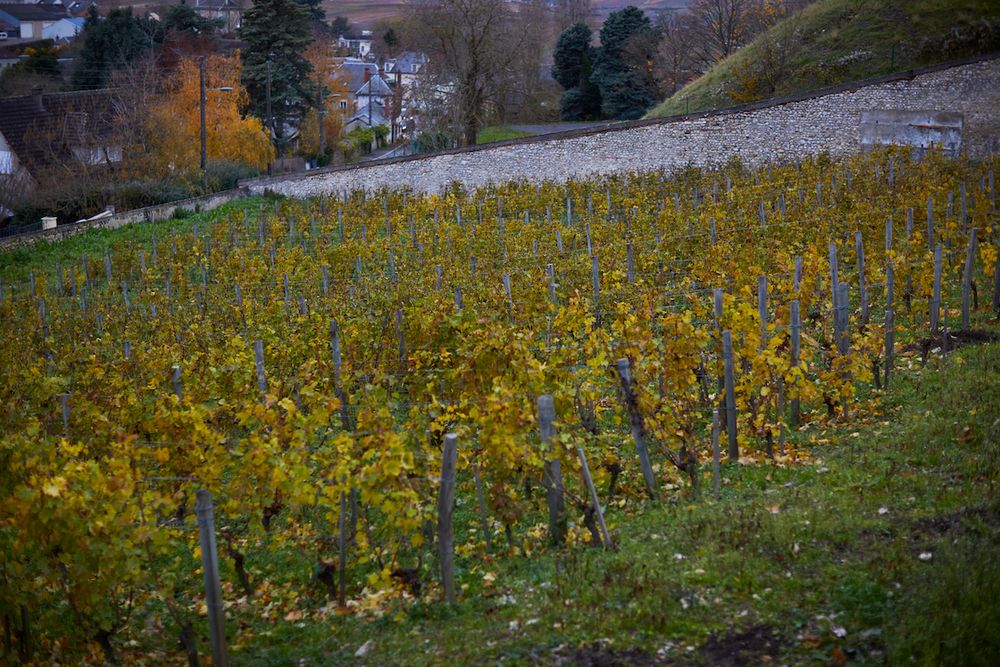
L’Enclos vineyard
Incidentally, L’Enclos, a site which the family acquired and planted in 2007, through a bizarre twist of appellation rules is not allowed to be called Sancerre, even though it is the only vineyard in Sancerre itself. The 1936 AOC classification omitted the town of Sancerre so that this wine, which is one of the best Sauvignon Blanc cuvées in the world has to be called Vin de France! Also, when the cousins bought this plot the intention was that it was going to be farmed by the Vacheron’s horse called Idol, but fate intervened.
“When we bought L’Enclos in 2007 Idol looked at the work… and just decided to die… silex is very hard (to be fair) and it is very hard to work the soil.”
Overall, Vacheron’s estate is 70 hectares large with 50 hectares planted to vine – 38 hectares Sauvignon Blanc and 12 hectares Pinot Noir. The plots are dotted around the area with some of the most coveted sites including Les Romains, Belle Dame, Les Marnes, Le Pave and Chambrates, each of the sites being vinified separately. The soils are made up of equal parts ‘silex’ (flint) and ‘caillottes’ (hard shards of limestone) with the blended ‘entry level’ Sancerre blanc coming from vines planted on the fault line between the two.

Jean-Laurent has worked at wineries around the world including Kumeu River and Ata Rangi in New Zealand and, when he returned to Sancerre he and his cousin decided to convert the estate to fully organic and then biodynamic – operating this way since 1999 and receiving certification in 2005. No chemicals are used.
Visiting the barns where the brews are made from rainwater collected in old vinification tanks and talking through the kit with Jean-Laurent it is clear that this is not a choice but a sustainable philosophy that has no feasible alternative.
“Wine is just about mineral and being organic,” he says simply.
The purity of the approach is evidenced in the final wines – the key being to minimise human intervention between the terroir and the finished wine. Chemicals are rejected, no fertiliser is used except for their own organic compost, all fruit is hand-harvested, grapes are fermented with indigenous yeasts in a combination of stainless steel, cement tanks and open-top fermenters and then aged in large oak casks or French oak barrels, according to the cru and the vintage; all wines are then bottled unfiltered according to the moon cycle.
Even the way that the two cousins work together is intuitive. Neither has specific roles, rather they do everything together, swapping tasks every two days. “This way everyone knows what is going on, there are no chiefs here, only Indians.”
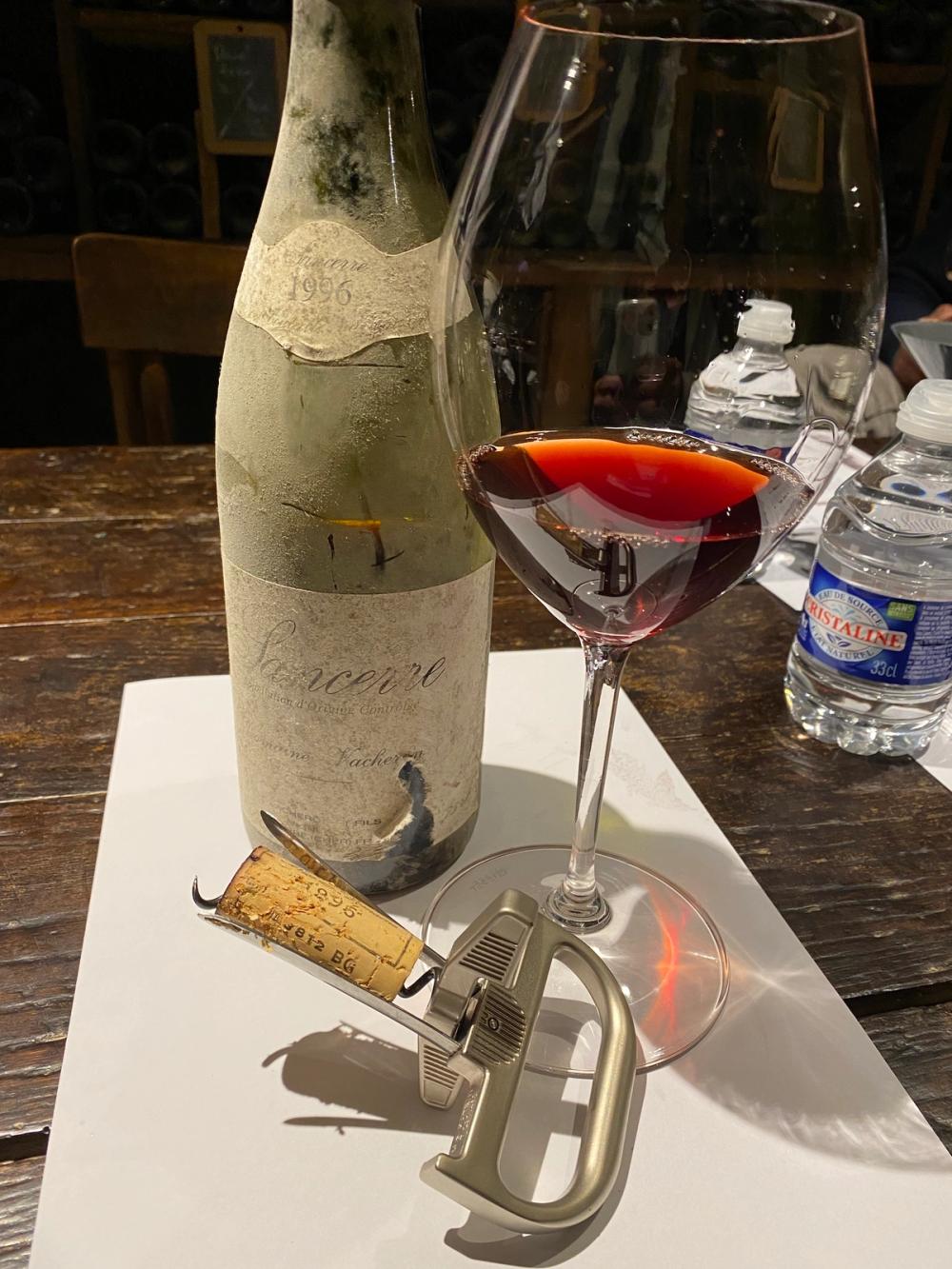
Built to last: this 1996 was as fresh as a daisy and drinking perfectly
Availability in the UK
Until recently the only issue I encountered with Vacheron’s wines was their availability in the UK – ‘they’re so hard to find’ being a stock response. Thankfully, the lack of availability has been rectified by Pol Roger which has been taken on as the UK importer. Previously it was the Wine Society that sold 99% of the UK allocation (45% of Vacheron’s total output 20 years ago) after a buyer visited, bought 10 bottles, took them back to Stevenage and realised what they had unearthed.
Since then Vacheron has redressed the balance by bringing other markets into play with 15% of wines going to the US then Russia, Sweden and China being major buyers.
The link-up with Pol Roger, however, has come about because of a similar set of priorities and set-up.
“We have a mutual way of thinking, we’re both family-owned first of all, but we also want to work with good restaurants and retails shops,” Jean-Laurent says, highlighting his own family’s roots as restaurateurs, “we’re a restaurant family and it is important to go to restaurants and appreciate good wine with a group of people.”
With that he asked one of our party what her birth date was, promptly found a 1996 Belle Dame Pinot, a 2004 blended white and started pouring, his smile broadening with every pour.
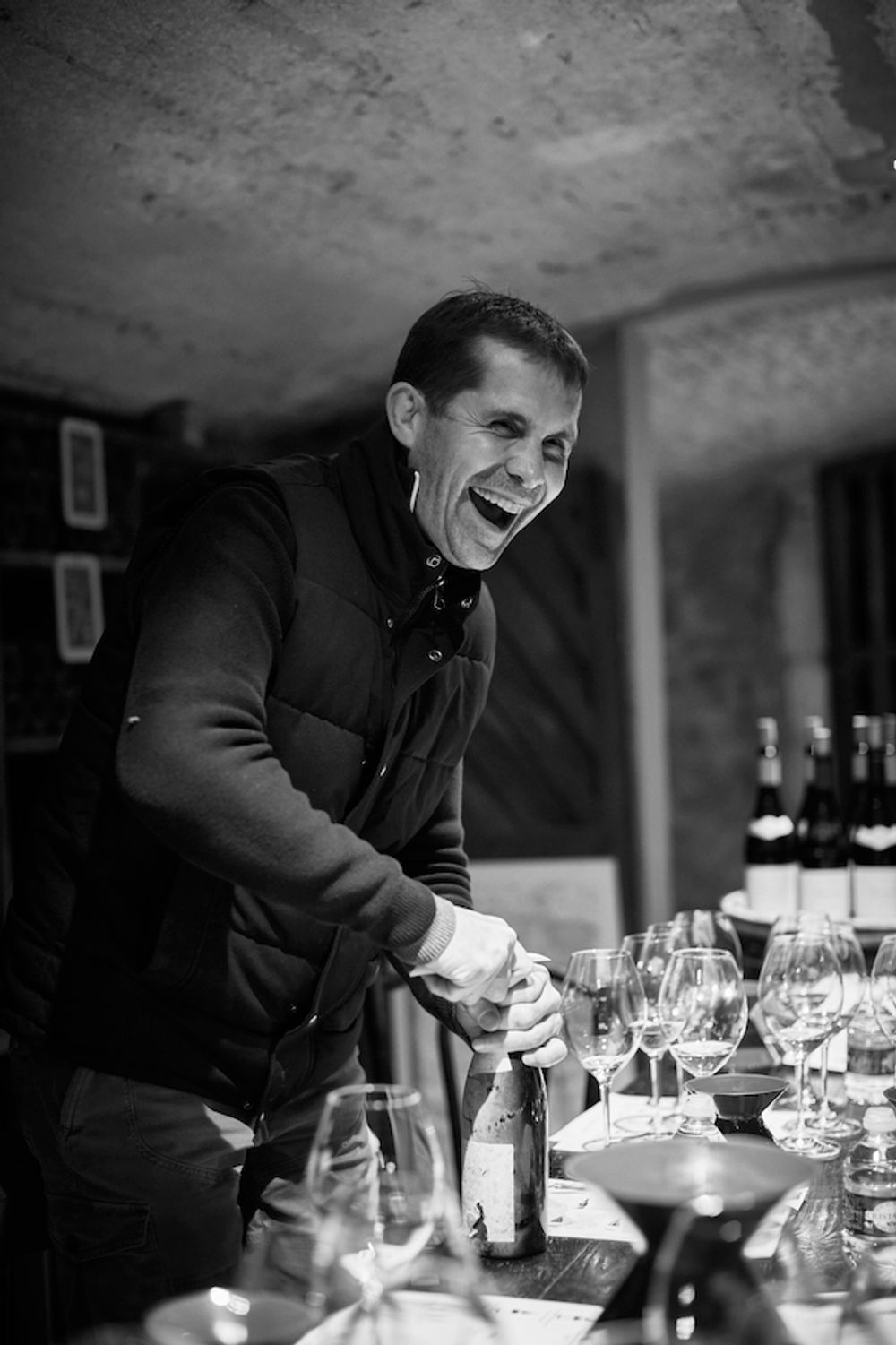
A full review of the new 2020 wines by Domaine Vacheron will be posted next week. Pol Roger Portfolio is a supplier partner of The Buyer. To read more about them click here.
































